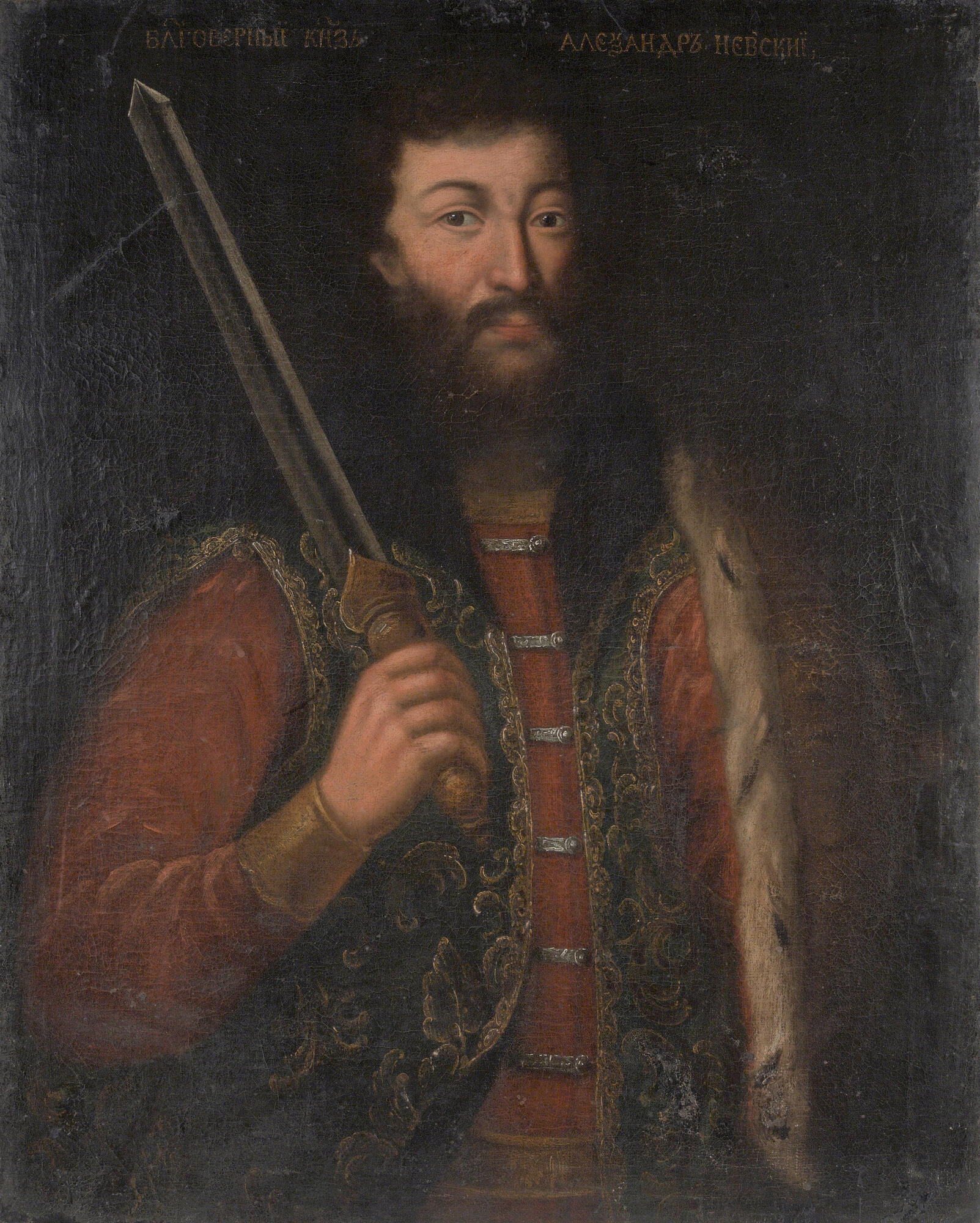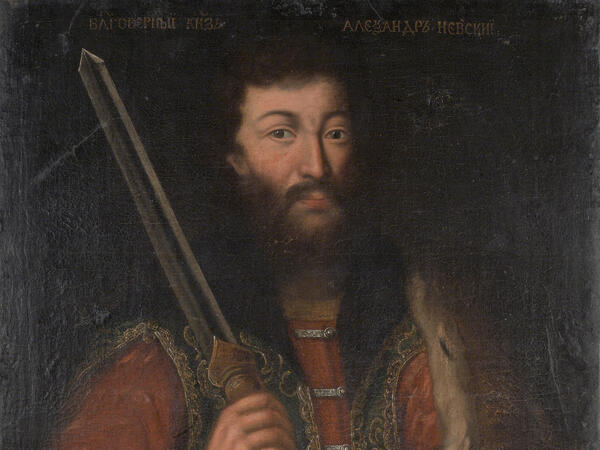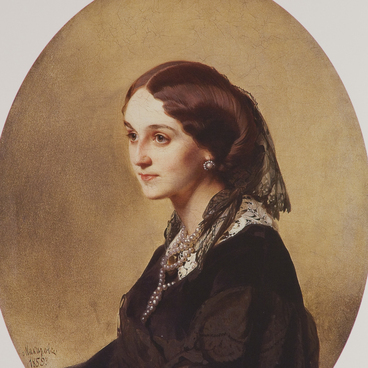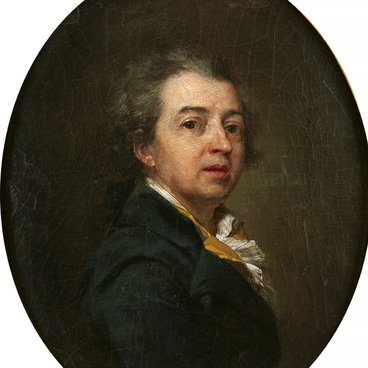Alexander Nevsky was born in 1220 (according to another version — in 1221). At first, he reigned in Novgorod, and then in Kyiv and Vladimir. The life and reign of Nevsky fell on the 13th century, which was a difficult historical period. At that time, civil strife was taking place in Russia, while enemies were advancing from the East and West.
Alexander Nevsky strove to unite the Russian principalities, while avoiding a direct clash with the Golden Horde (a constituent of the Mongol Empire), which after Batu Khan’s invasion only strengthened its position. Nevsky gained recognition for the protection of the Novgorod and Pskov lands from Sweden, Lithuania and the Livonian Order.
The collection of the Chelyabinsk State Museum of Fine Arts contains a portrait of Alexander Nevsky, which was created around 1725.
In Russia, portrait as a painting genre comes from the church tradition of icon painting. One of the first parsunas was the painting “Blessed Prince Alexander Nevsky” painted in the late 17th century by an unknown artist. The term “parsuna” itself, which is the distorted form of “persona”, denotes an intermediate genre between the iconic image and the secular portrait. “Parsuna” is translated as “person” from Latin.
In the portrait of Nevsky from the Chelyabinsk collection, one can see that the artist moved away from the flat and conventional language of icons towards accuracy and reliability. He subtly painted the prince’s face and conveyed the texture of velvet and gold embroidery in clothes. Besides, Prince Alexander Nevsky is depicted as just a man, not a saint. However, in this picture, there are features not only of a portrait but also of an icon. On the canvas, the inscription can be seen: ‘Blessed Prince Alexander Nevsky’. Such inscriptions are not typical for paintings. You can also see a conventionally painted sword, an attribute of a holy warrior, the heavenly patron of the Russian land. This element shows the sacred character of the image.
Alexander Nevsky was canonized in the 16th century. Before the decision of the Synod of 1724, he was depicted in a monk schema, and not in the Grand Duke’s clothing, as on the Chelyabinsk parsuna.
The canvas presumably belonged to the Naryshkin family, from which it later made it to the Alexander Nevsky Lavra, where it was kept for a long time. After the Bolshevik revolution, the parsuna was given to the State Russian Museum, which donated the work to the newly opened Chelyabinsk museum in 1940.
Alexander Nevsky strove to unite the Russian principalities, while avoiding a direct clash with the Golden Horde (a constituent of the Mongol Empire), which after Batu Khan’s invasion only strengthened its position. Nevsky gained recognition for the protection of the Novgorod and Pskov lands from Sweden, Lithuania and the Livonian Order.
The collection of the Chelyabinsk State Museum of Fine Arts contains a portrait of Alexander Nevsky, which was created around 1725.
In Russia, portrait as a painting genre comes from the church tradition of icon painting. One of the first parsunas was the painting “Blessed Prince Alexander Nevsky” painted in the late 17th century by an unknown artist. The term “parsuna” itself, which is the distorted form of “persona”, denotes an intermediate genre between the iconic image and the secular portrait. “Parsuna” is translated as “person” from Latin.
In the portrait of Nevsky from the Chelyabinsk collection, one can see that the artist moved away from the flat and conventional language of icons towards accuracy and reliability. He subtly painted the prince’s face and conveyed the texture of velvet and gold embroidery in clothes. Besides, Prince Alexander Nevsky is depicted as just a man, not a saint. However, in this picture, there are features not only of a portrait but also of an icon. On the canvas, the inscription can be seen: ‘Blessed Prince Alexander Nevsky’. Such inscriptions are not typical for paintings. You can also see a conventionally painted sword, an attribute of a holy warrior, the heavenly patron of the Russian land. This element shows the sacred character of the image.
Alexander Nevsky was canonized in the 16th century. Before the decision of the Synod of 1724, he was depicted in a monk schema, and not in the Grand Duke’s clothing, as on the Chelyabinsk parsuna.
The canvas presumably belonged to the Naryshkin family, from which it later made it to the Alexander Nevsky Lavra, where it was kept for a long time. After the Bolshevik revolution, the parsuna was given to the State Russian Museum, which donated the work to the newly opened Chelyabinsk museum in 1940.



